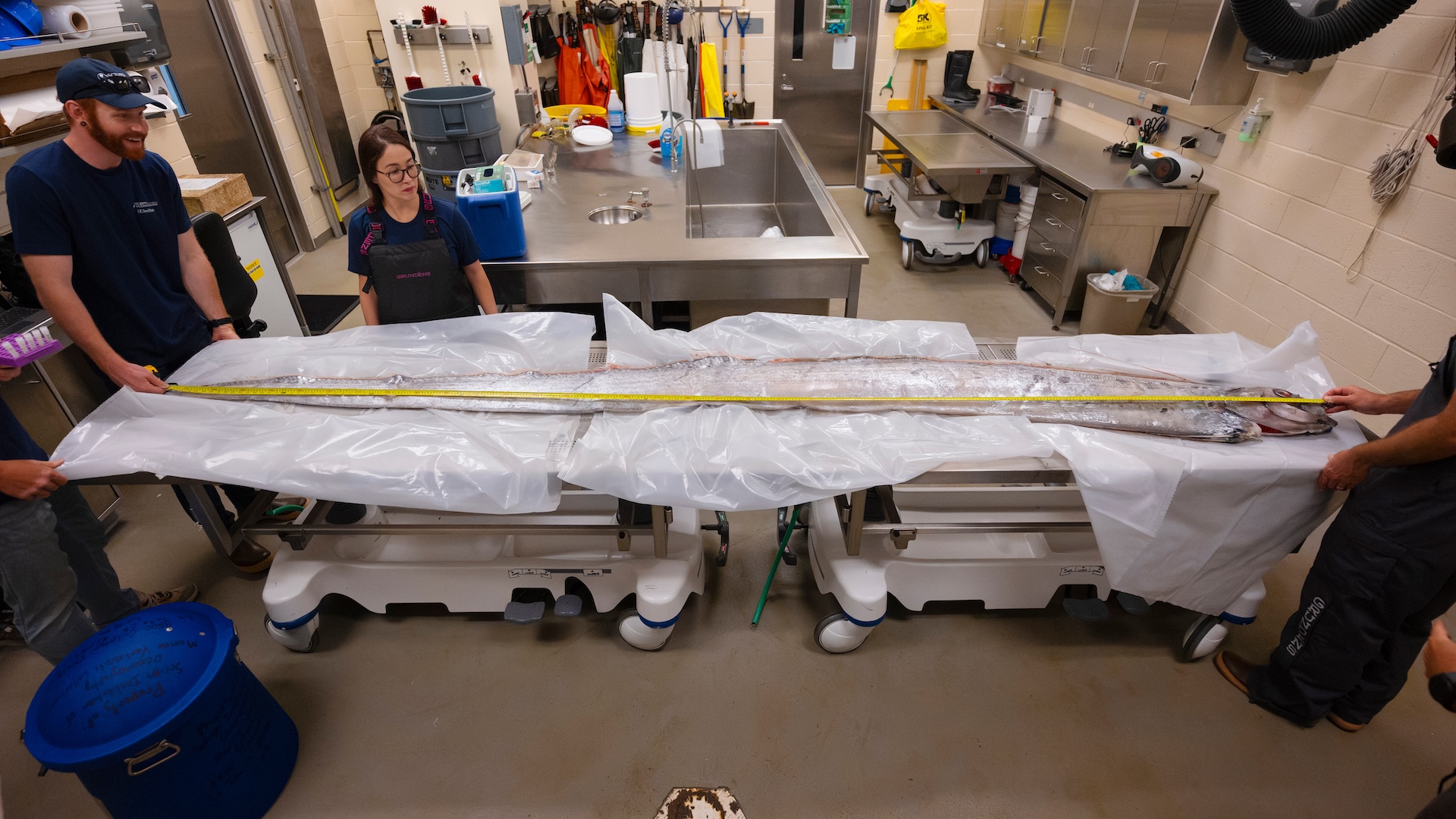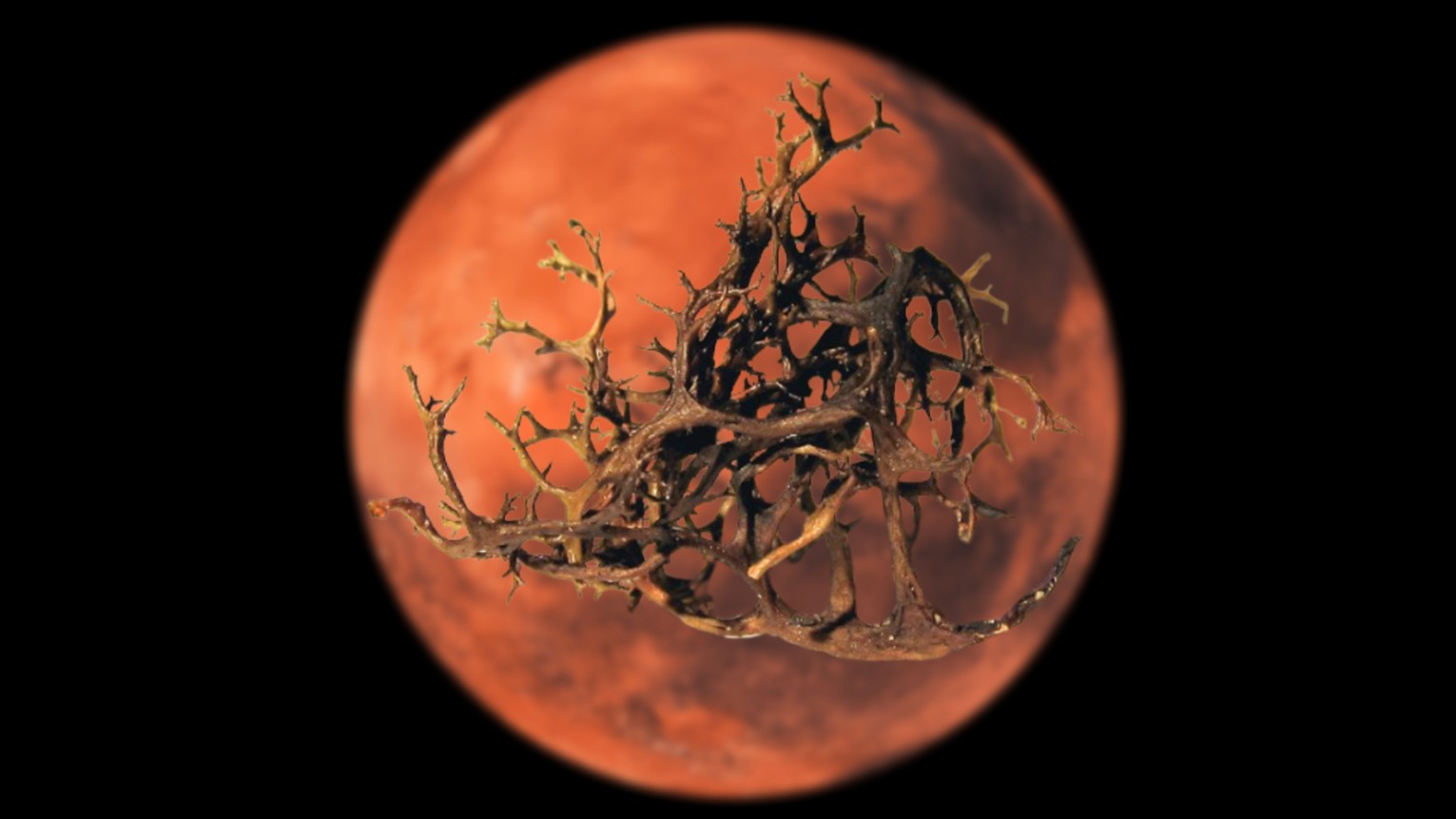Rare 'doomsday fish' said to bring earthquakes spotted in California days before LA quake
Beachgoers found a rare oarfish off California two days before an earthquake, mirroring folklore that says the deep-sea creatures are "doomsday fish."

Beachgoers in California recently found a rare, giant "doomsday fish" that folklore claims is linked to earthquakes. In a strange coincidence, the region then experienced a quake just two days later.
The 12-foot-long (3.7 meters) short-crested oarfish (Regalecus russellii) is only the 20th oarfish to wash up in California since 1901, according to a statement released by the Scripps Institution of Oceanography at the University of California, San Diego. These fish live in the deep sea and are rarely seen by people. They also have a reputation in Japanese folklore as harbingers of disaster.
"There's this thought that they're a doomsday fish or a bad omen and that they seem to signal things like tsunamis or earthquakes," Zachary Heiple, a doctoral student at the Scripps Institution of Oceanography who helped recover the oarfish, told Live Science.
The oarfish washed up near San Diego on Aug. 10. On Aug. 12, a magnitude 4.4 earthquake hit Los Angeles. However, the two events are unlikely to be related.
Heiple pointed to a 2019 study published in the journal Bulletin of the Seismological Society of America that found any supposed link between oarfish sightings and earthquakes was pure superstition.
"There didn't really seem to be any correlation," Heiple said. "But it's a really interesting tidbit because it shows how oarfish and human history have interacted throughout time. "
Related: Gigantic sunfish that washed up on Oregon beach could be the largest of its species ever found
Sign up for the Live Science daily newsletter now
Get the world’s most fascinating discoveries delivered straight to your inbox.

Oarfish can grow to 36 feet (11 m) long and could have inspired ancient tales of sea monsters, according to the Florida Museum of Natural History. The ribbon-like creatures live up to thousands of feet deep in oceans around the world, filter-feeding on krill and crustaceans.
Researchers don't yet know why the oarfish washed up in San Diego, but it ended up in a shallow reef between La Jolla Cove and La Jolla Shores. A group of current and former marine scientists happened to be snorkeling and kayaking on the reef that day.
Emily Miller, a research associate at California Sea Grant, who was part of the group, told Live Science in an email that she was "bewildered" when a member of the public told her about the shiny, silver fish.
"The visibility wasn't top-tier that day, but the highly reflective surface of the oarfish was still brilliantly obvious underwater," Miller said.

The fish was near the bottom of the reef, so Miller pushed it to the surface and called for help. "I knew immediately that this fish would be a very significant subject of study, and that the researchers at nearby institutions and agencies would want to collect the animal," she added.
The reef is in a protected area, so the researchers secured permission to remove the fish and then worked with members of the public to get the giant animal to shore.
"It was like Christmas morning," Heiple said. "These are very rare, and something like this just doesn't happen very often."
The oarfish went to a National Oceanic and Atmospheric Administration (NOAA) facility where researchers took samples to learn more about the animal. It's not clear why the oarfish died, but it was in good condition, according to the statement.
Heiple is studying the evolution of deep-sea fish and hopes DNA samples will shed light on why oarfish evolved such a bizarre appearance.
"It was really excellent that we were able to preserve this oarfish, and we are getting to take as many samples as we are," he said.

Patrick Pester is the trending news writer at Live Science. His work has appeared on other science websites, such as BBC Science Focus and Scientific American. Patrick retrained as a journalist after spending his early career working in zoos and wildlife conservation. He was awarded the Master's Excellence Scholarship to study at Cardiff University where he completed a master's degree in international journalism. He also has a second master's degree in biodiversity, evolution and conservation in action from Middlesex University London. When he isn't writing news, Patrick investigates the sale of human remains.









